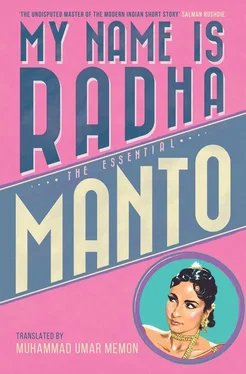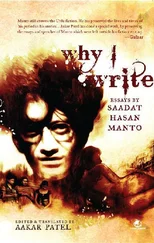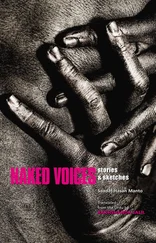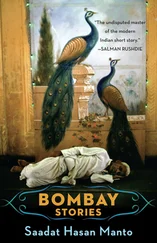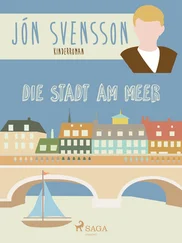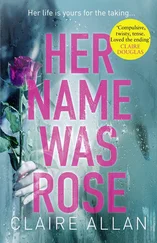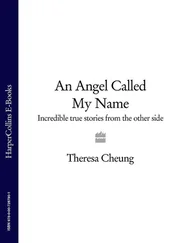*Conundrum, confusion.
†Manto uses ‘ apan ko sari javan aurten chalti hain ’ and adds in parentheses ‘[it is a] Kathiawar, Gujarat’s expression which has no equivalent in Urdu’.
*If you want to earn a good name, do charitable works/build a bridge, a mosque or water tank, or sink a well.
*Junk.
†Where would we go if we found no peace even after dying.
*There is no God but Allah; Muhammad is the messenger of Allah. The Muslim profession of faith.
*Urdu pronunciation of deputy.
*A bedframe with broad cotton-tape meshing.
*Manto’s use of the word is ironical. What is meant is the conjugal bed.
*As required by Islamic law, the mandatory amount of money or possessions given at the time of marriage by the groom to the bride for her exclusive use.
*Manto does not include him among the dramatis personae.
* ‘ Pāñchvāñ Muqaddama’, from Dastāvez (June 1982), pp. 174–84.
*Manto’s wife.
*Ahmad Nadeem Qasimi.
* ‘ Manto aur Maiñ’ appeared as ‘Pāñchvāñ Muqaddama — Tīn’, in Dastāvez (June 1982), pp. 184–88.
*Used for Indian Muslims who migrated to Pakistan during Partition. The word also has the connotation of a refugee who is destitute and in need of assistance. Whether Manto intended this subtle meaning is hard to say. Most likely, he did.
*‘Iṣmat-Farōshī’, from the author’s collection Manto ke Mazāmīn (Lahore: Idāra-e Adabīyāt-e Nau, 1966), pp. 155–72.
†Literally, ‘ ‘iṣmat’ means ‘innocence’, the preservation of ‘chastity’, ‘modesty’, ‘purity’; figuratively, ‘virginity’, which is intended here. Manto is aware of the inherent contradiction of the compound noun ‘ ‘iṣmat-farōshī’ and deals with it later on in this piece.
*‘Afsāna-Nigār aur Jinsī Masā’il’, from the author’s collection Mantōnāma (Lahore: Sang-e-Meel Publications, 1990), pp. 684–87.
*‘Mujhē Bhī Kuchh Kahnā Hai’, from the author’s collection Mantōnumā (Lahore: Sang-e-Meel Publications, 1991), pp. 732–42.
*Musharraf Ali Farooqi has especially translated this and the following extract.
*‘Jaib-e Kafan’ appeared in the author’s collection Mantonāma (Lahore: Sang-e-Meel Publications, 1990), pp. 221–42.
*‘Main Afsāna Kyunkar Likhtā Hūn’, from the author’s collection Ūpar, Nīche, aur Darmiyān (Lahore: Gosha-e Adab, 1990), pp. 237–40.
*‘Haashiya-aaraa’i’, his preface to Siyāh Hāshiye (Black Margins), in Saadat Hasan Manto, Mantonuma (Lahore: Sang-e-Meel Publications, 1991), pp. 745–52.
*Those in Manto’s Siyāh Hāshiye (Black Margins) and other works.
*Muhammad Hasan Askarī ‘Fasādāt aur Hamārā Adab’, (Aligarh: Educational Book House, 1976), pp.139–49. Dates of authors added by the translator.
*Saadat Hasan Manto, Manto ke Mazāmeen (Lahore: Idāra-e Adabiyāt-e Nau, 1966), pp. 155–72.
†Mehdi Ali Siddiqi, ‘Manto aur Maiñ’, in Dastāvez (June 1982), p. 185.
*Translated from the French by Carol Volk (New York: The New Press, 1995).
*See, ‘Mujhe Bhi Kuchh Kahnā Hai’ in the author’s collection Mantonumā (Lahore: Sang-e Meel Publications, 1991), 732–42.
†Translated as ‘The Foot Trail’ by Muhammad Umar Memon in The Annual of Urdu Studies 25 (2010), 194–204.
*Translated from the Czech by Michael Henry Heim (New York: Penguin, 1984).
†Earlier, when undergoing a minor surgery without anesthesia, Tamina had ‘forced herself to conjugate English irregular verbs’ through the procedure to kill the ensuing pain (ibid., p. 109).
* The Neruda Case , translated by Carolina de Robertis (New York: Riverhead Books, 2012), 51.
